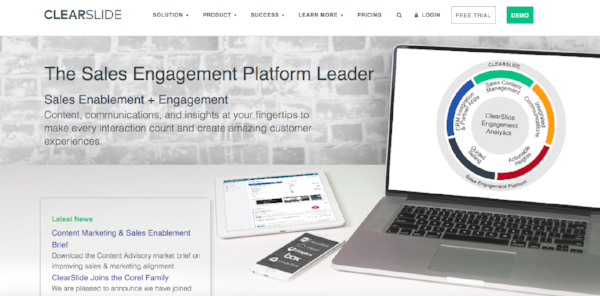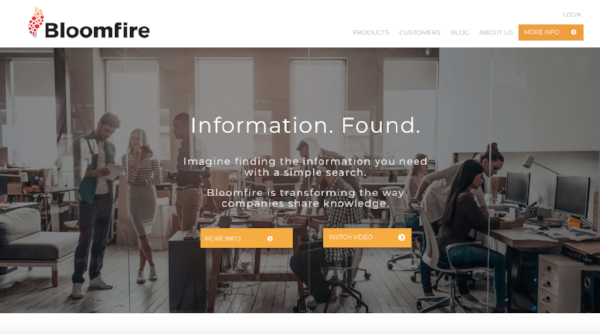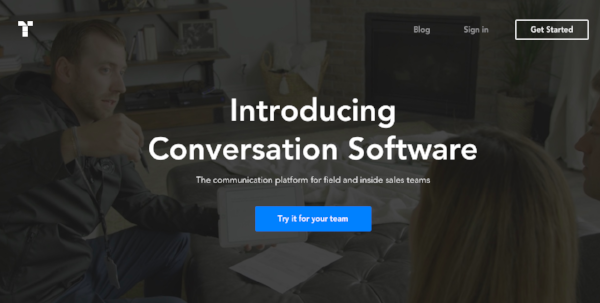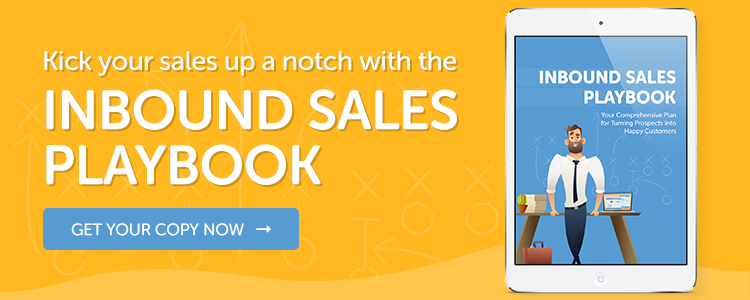In this era of close alignment between sales and marketing, sales enablement is growing as a buzzword and sales enablement tools are becoming more popular.
What Is Sales Enablement?
Sales enablement refers to empowering your sales organization with all the tools, information, and content it needs to engage decision makers.
These days, sales enablement tools are more important than ever, since sales pros need to stay on top of the buyer journey from beginning to end.
This is especially vital in the world of B2B. If you don’t follow up, a sale that seems like a sure thing can easily fall by the wayside.
Sales Enablement Best Practices
When it comes to sales enablement, you want to make sure you're doing all that you can to empower and optimize your team. Burnt out or disengaged sales reps leads to a drop in prospecting productivity and revenue.
Align With Marketing.
Your company is at its strongest when your marketing and sales teams are working in unison.
Businesses that align their internal teams have healthier, more reliable pipelines since the teams have a clear understanding of lead qualification, ideal customers, and business goals.
Keep Your CRM at the Center.
All of your strategies and efforts should be built around your CRM. The system is equipped to help you prospect and nurture leads effectively and efficiently. A great CRM will help you retain leads.
Create Valuable Content.
Sales enablement content is a great way to educate both prospects and your own sales reps. This will help decrease the number of objections potential customers may have toward the sales process.
Find out what content your prospects are interested in at each stage of their buyer journey. Relevant content will aid your sales reps in moving prospects through the pipeline.
Optimize Your Strategies.
It isn't rare for your sales reps to have a stroke of genius or stumble upon a unique tool or practice. Embrace whatever new strategies may pop up if they lead to a better sales process.
Look for opportunities to optimize your sales team's strategies as a whole. If one rep is doing exceptionally well with a particular tactic, explore implementing the technique or teaching the practice to the rest of your team as well.
Invest in Training.
Onboarding new team members isn't enough to keep your team at the top of their game. Training is a way to encourage and teach sales reps regularly, sharpening their skills throughout their careers.
Bringing in outside coaches and experts provides an opportunity to bring new perspectives and techniques into your business. Offering training opportunities also reduces churn and increases team productivity.
Sales Enablement Technology Benefits
It’s crucial that good sales enablement tools connect seamlessly with your existing technology stack. When you're able to implement them into your strategy, you'll reap benefits that are going to bolster your team's efforts.
Here are just a few perks to sales enablement technology:
Managers Are Able to Act as Stronger Support.
With a sales enablement strategy that uses the right tech, your sales leadership will be able to develop their skills and properly support the company's objectives and goals regularly.
Managers can take it a step forward by coaching their reps on any new skills or trainings that they've undergone themselves.
Sales Reps Are Able to Go the Distance.
Long term success requires steady and committed engagement.
With sales enablement tools, salespeople are routinely trained and equipped to keep pursuing their goals for the long haul. Creating a culture of learning and growth promotes loyalty and engagement.
A dedicated team makes hitting those long-term goals possible.
Reps Can Remember the Basics.
Sometimes it's a good idea to have a refresher on the basics of selling. Sales trends are cycled through constantly and it can be easy to forget what the core consultative skills are.
Sales enablement technology can help any team re-familiarize itself with the simple tasks of performing pre-call research, improvisation, and managing a loaded calendar.
How to Develop a Sales Enablement Strategy
Implementing a sales enablement program is a delicate process that should be done with attention to your business' unique needs, strengths, and weaknesses.
We've broken down how you can go about tailoring a strategy that's perfect for your team in five steps:
1. Establish Clear Objectives With Your Sales Reps.
When developing goals, you'll want to be as specific and clear as possible. Vague, general objectives like "boost revenue" won't cut it.
Come up with tangible, actionable goals that you can measure and analyze with your sales team. Looping them into the process guarantees that they're on board from the start.
On top of that, by communicating with your reps, you'll be able to identify and target specific gaps in your process and strategy that you'll be able to resolve through sales enablement.
2. Understand Your Customer's Buyer's Journey.
Understanding both who your customers are and what their journey looks like will help you align your company's sales process with customer expectations.
When you can identify your prospects' wants and needs you can better equip your sales reps to meet them and pitch your company's value to them.
Examine every touchpoint your customer has with your company and consider how to optimize each one by providing relevant resources and content.
Which leads us to our next step.
3. Create the Necessary Collateral.
Crafting relevant content is an important step in almost every business strategy. Valuable content can aid your sales team by establishing them as trustworthy experts in the eyes of your prospects.
Gather up all the collateral that both your reps and prospects may need. For example:
- Email templates
- Quotes
- Contract templates
- Case studies
- Whitepapers
- Ebooks
- Surveys
- Testimonials
All of these and more can be used to help push leads down the pipeline and closer to a closed deal.
4. Develop Training Material.
We mentioned earlier how valuable of an investment training is. Prepping all the materials necessary to get your team up to date on your CRM, deals, automation software, and other tools will get you one step closer to giving your salespeople the foundation that they need.
Train your reps in whatever sales enablement technology you bring into your strategy so that everyone's on the same page in regards to how you're going to execute your strategy.
5. Implement and Analyze the New Strategy.
It's important to remember that once your sales enablement strategy is implemented, it will, and should, fluctuate and change.
This is a good thing. A static strategy is a useless one.
As the industry evolves, so should your team's approach to how they engage with prospects and customers. This is true of every department in your company, but especially your sales team since they're often the first point of company-customer engagement.
Track and analyze your program routinely to identify what's working and what can be improved. There's nothing wrong with having to adapt, or sometimes scrap entirely, an element.
The more you can refine your sales enablement strategy, the easier it will be to execute.
11 of the Best Sales Enablement Tools
After looking far and wide for the best sales enablement tools around, the team at Bluleadz has some recommendations you might want to keep under your hat (or, you know, in your sales office – it’s your deal).
Check out these awesome sales enablement tools and be enlightened.
1. HubSpot CRM

HubSpot CRM is the big winner when it comes to delivering aligned sales and marketing in a sleek way. Both efficient and effective, it combines customer relationship management with a suite of top tools for web design, email marketing, social media management, and much more.
2. Showpad
Everyone knows that faster onboarding means greater productivity. Showpad offers contextual sales training that makes it happen. Self-driven, engaging sales training in bite-sized chunks will get your reps up to speed on any device. It even enables live practice and sales role plays.
3. Guru
The Guru philosophy is simple: Seamless unification of sales, marketing, and customer service. It ensures updates to sales collateral instantly refresh the support knowledge base so everyone has the right info every time. Slack integration facilitates cross-functional teamwork.
4. ClearSlide

ClearSlide does it all. The key to the platform is its CRM and built-in data analytics, but these also cascade down to make the other features really responsive. Sales content management, guided selling, and integrated communication are all handled from an intuitive, powerful interface.
5. DocSend
DocSend centralizes sales and marketing collateral in a friendly way that helps with enthusiastic adoption. It handles version management for you, moves documents between teams and devices without using email, and presents snappy analytics to show a document’s entire journey.
6. Conga
Conga makes digital transformation easier. It focuses on proposal and contract management, an area where many B2B sales pros have complaints about their current processes. Full lifecycle document management and generation take the guesswork out from first draft to signature.
7. Bloomfire

As enterprises accrue more knowledge, facts often becomes a lot harder to find. Bloomfire helps to fight off information creep. It equips you with a knowledge sharing platform that makes sharing information across silos transparent. You can surface anything with a single search.
8. BuzzBoard
BuzzBoard is a comprehensive AI-driven analytics and decision support platform especially for sales pros focused on the SMB space. It micro-segments prospects through a huge array of fresh prospect data, accelerates custom content creation, and even generates its own lead scores.
9. Sudo
Sudo brings Slack-enabled AI to the next level as a “virtual sales assistant” you use right from your favorite chat app. It keeps all your data and documents up to date by connecting to your CRM, Google Apps, contacts, email, and tasks. It also acts for you to manage lead interactions.
10. Tiled

Tiled is a communication platform that links inside and field sales teams so they can coordinate even better. You can engage your customers with data-backed insights, then collaborate with team members through slick shared screen experiences on any device, anywhere in the world.
11. Consensus
Custom sales collateral is the king of B2B, but bringing savvy personalization to video is tough. Consensus breaks you out of resource-intensive workflows by automating the whole process of interactive demo development. Each stakeholder can have their own custom video experience.
Sales enablement tools are a core part of a modern digital sales and marketing strategy.
Any of these tools can help you bring your “A” game in sales, so don’t overlook the chance to make them a part of your sales team operations.


Micah Lally
I’m a Content Writer at Bluleadz. I’m a big fan of books, movies, music, video games, and the ocean. It sounds impossible to do all of those at the same time, but you’d be surprised by the things I can accomplish.